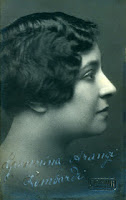Vittorio Storaro - cinematographer
Triple Oscar winner among best in movie history
Cinematographer Vittorio Storaro, whose work has won three Academy Awards, was born on this day in 1940 in Rome. Storaro won Oscars for Best Cinematography for Francis Ford Coppola’s 1979 Vietnam War epic Apocalypse Now, for the Warren Beatty-directed historical drama Reds in 1981, and for The Last Emperor, Bernardo Bertolucci’s story of imperial China, in 1987. Described as someone for whom cinematography was “not just art and technique but a philosophy as well”, Storaro worked extensively with Bertolucci, for whom he shot the controversial Last Tango in Paris and the extraordinary five-hour epic drama 1900. He filmed many stories for his cousin, Luigi Bazzoni, collaborated with Coppola on three other movies and recently has worked with Woody Allen, whose latest picture, A Rainy Day in New York, is due to be released next month. Read more…
______________________________________________________________________
Battle of Solferino
Suffering of soldiers led to the founding of the Red Cross
The Battle of Solferino took place on this day in 1859 south of Lake Garda between Milan and Verona. It was the last battle in world history where all the armies were under the personal command of their monarchs. The French army under Napoleon III was allied with the Sardinian army commanded by Victor Emmanuel II. Together, they were victorious against the Austrian army led by Emperor Franz Joseph I. The battle lasted more than nine hours and resulted in thousands of deaths on both sides. The Austrians were forced to retreat and it was a crucial step towards the eventual unification of Italy under an Italian king. Jean-Henri Dunant, a Swiss businessman, toured the battlefield afterwards and was horrified by what he saw, joining in with the efforts of local people to care for the injured. Greatly moved by the suffering of the thousands of wounded and dying soldiers, he wrote a book about what he had seen and set about establishing the International Red Cross. Read more…
_____________________________________________________________________
Piero Barone – singer
Young tenor found fame on TV talent show
Piero Barone, one of the three singers who make up the Italian opera and pop group, Il Volo, was born on this day in 1993 in Naro, a town in the province of Agrigento in Sicily. Il Volo hit the headlines after winning the Sanremo Music Festival in 2015. They came third when they represented Italy in the Eurovision Song Contest with their hit Grande Amore later that year in Austria and have since acquired growing popularity world wide. In 2016, the group, together with tenor Placido Domingo, released Notte Magica – A Tribute to the Three Tenors, a live album featuring many of the songs performed by the Three Tenors (Domingo, Luciano Pavarotti and Jose Carreras) for their iconic concert held at the Baths of Caracalla in Rome on the eve of the Italia ’90 World Cup. Piero’s musical talent was discovered by his grandfather, Pietro Ognibene, when he was just five years of age. Pietro was a blind musician who had written a song in Sicilian and when Piero sang it for him he was amazed by his voice. Read more…
____________________________________________________________________
Battle of Custoza
Austrians thwart Italy’s hopes of unifying the peninsula
An army of the recently unified Kingdom of Italy was driven out of Custoza in the Veneto region by Austrian troops on this day in 1866. Although the Italians had twice the number of soldiers, the Austrians were victorious strategically and drove the Italians back across the Mincio river and out of the area then known as Venetia. King Victor Emmanuel II’s younger son, Amadeo, was severely wounded in the battle but he survived his injuries and went on to reign briefly as King of Spain from 1870 to 1873. The German Kingdom of Prussia had declared war on the Austrian Empire and the Kingdom of Italy seized the opportunity to join forces with Prussia, with the intention of annexing Venetia and uniting the Italian peninsula. The Austrian Imperial army joined up with the Venetian army. The Italians divided their troops into two armies, one led by General Alfonso Ferrero La Marmora, accompanied by the King, and the other led by Enrico Cialdini. La Marmora’s troops crossed the Mincio river and invaded Venetia. Read more…
Home























